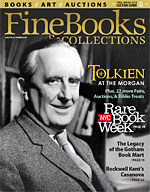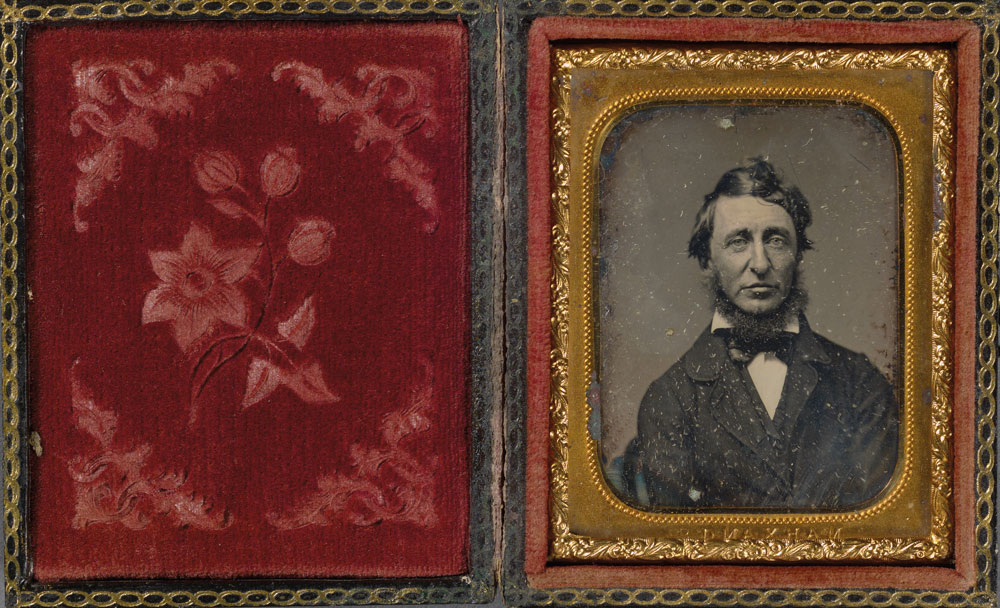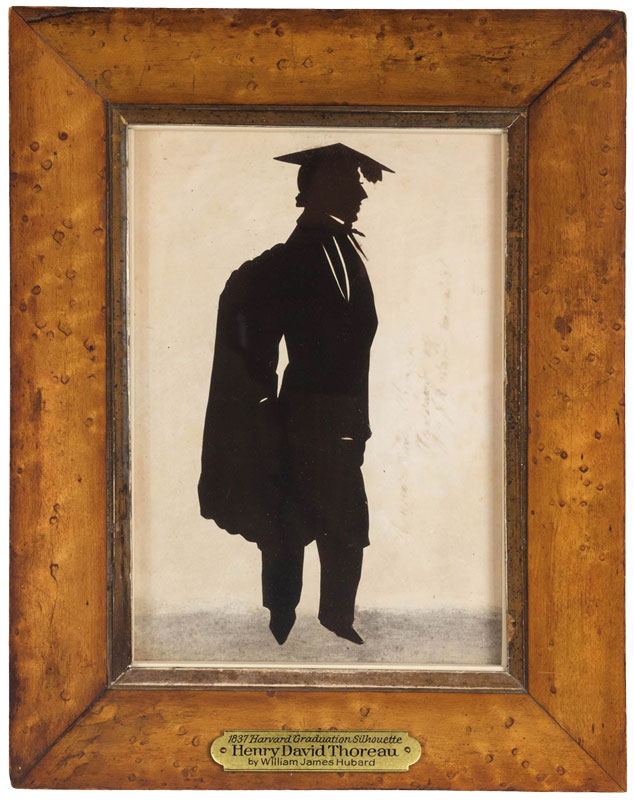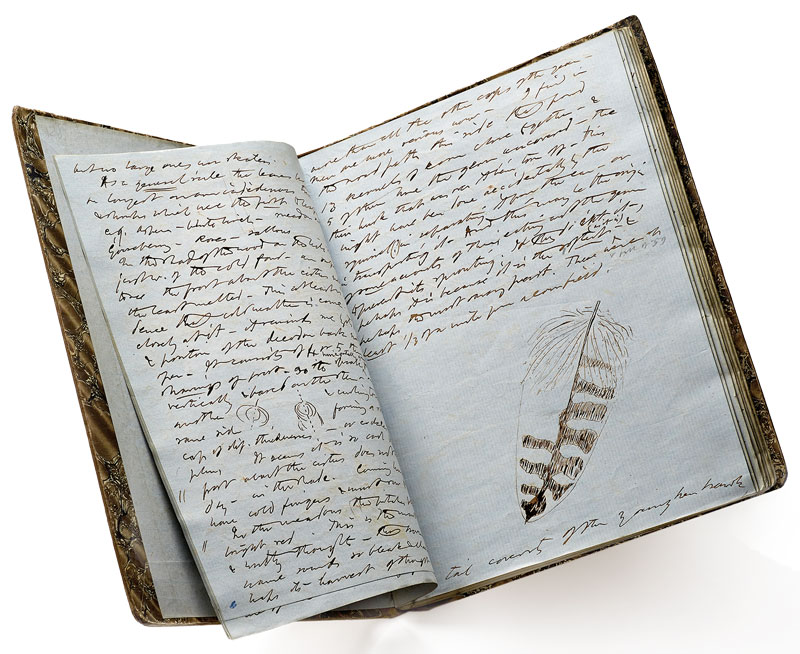Henry D. Thoreau: Reader, Writer, #RESISTer
A major collaborative exhibition reveals the depth of Thoreau’s disobedience By Rebecca Rego Barry Rebecca Rego Barry is the editor of this magazine and the author of Rare Books Uncovered: True Stories of Fantastic Finds in Unlikely Places.
We all think we know Thoreau. Some might call the author of Walden a forward-thinking genius, others a freeloading mansplainer. But in this, his bicentennial year, a major collaborative exhibition mounted at the Morgan Library & Museum in New York City, offers a substantial and inclusive look at Thoreau’s multitudes, to paraphrase his literary acquaintance Walt Whitman.
Bringing together for the first time Thoreau-owned objects and the journal he kept for more than half of his short life, This Ever New Self: Thoreau and His Journal will depart New York on September 10 and travel to the Concord Museum in his Massachusetts hometown, opening September 29. The layout there will vary slightly, but “the interpretive framework won’t change,” said David F. Wood, curator of the Concord Museum and author of An Observant Eye: The Thoreau Collection at the Concord Museum. By which he means the seven categories that he and co-curator Christine Nelson at the Morgan used to wrangle the wild Thoreau: Neighbor, Student, Worker, Reader, Thinker, Writer, Observer.
Among those groupings, one might assume primacy for “Writer,” given Thoreau’s place in the American literary canon. Not so. It is the section labeled “Thinker” that appears crammed with ‘aha!’ items, revealing or reminding us that Thoreau held radical ideas, particularly about slavery. Here then is paired the hefty steel lock and key from the jail where he was detained for one night in 1846 after he refused to pay a poll tax to a country that denied basic human rights to African Americans. That stint in prison became the catalyst for his 1849 essay, “Resistance to Civil Government,” better known as “Civil Disobedience,” in which he wrote, “All men recognize the right of revolution; that is, the right to refuse allegiance to, and to resist, the government, when its tyranny or its inefficiency are great and unendurable.”
It’s a statement that still hits like a wrecking ball 168 yeas later. In today’s America, “[Thoreau] would be a protestor, you’d just never catch him at it,” said Wood. While Thoreau was not a “joiner of formal protests,” Wood explained, there were exceptions, and these are showcased in the exhibition. Thoreau attended, for example, a Fourth of July rally in 1854 to burn copies of the Fugitive Slave Law, sharing the stage with Sojourner Truth. After the Harpers Ferry raid in 1859, which he and Ralph Waldo Emerson both knowingly supported, he filled forty-six pages of his private journal in four days. In public, he stood in for a wary Frederick Douglass at a lecture at Boston’s Tremont Temple on November 1, reading his “Plea for Captain John Brown.”
For a writer whose name has been dragged through the mud of late (e.g., a profile of him titled “Pond Scum,” in the New Yorker two years ago), it’s worth lingering over his dogged—some might say tiring, or tiresome—crusade against injustice. He was an idealist, said Wood. “He never let up. That got wearisome for the people around him in his lifetime. It gets wearisome for people still.”
His tenacity manifests itself in the journal, too. While Thoreau published only two books during his lifetime, his journal runs to forty-seven manuscript volumes. “But what does all this scribbling amount to?” he wondered in his first journal. The short answer: source material for his lectures and books; he physically clipped sections from early entries for re-use, but left later journals intact. But its value as a work of art is its constancy, and in recording thoughts large and small. “The journal is the thread throughout Thoreau’s life,” said Christine Nelson, at the exhibition’s preview on June 1. An entry from 1837 lists Thoreau’s “firsts” (house, job, lecture). Another, from 1858, recalls his examination of a hawk that a neighbor had shot down. A sketch of a feather adorns that entry, and, in the exhibition’s display case, it shares space with Thoreau’s mahogany and brass spyglass.
The exhibition also grants a peek at Thoreau’s commonplace book where he logged his reading (Milton, Horace), and his 1855 edition of the Bhagavad-Gita stands as a memento of that part of his life. Under the rubric of “Student,” we consider Thoreau’s years at Harvard, illustrated by a cut paper silhouette portrait of him. In the “Observer” section of the exhibit, Thoreau as citizen-scientist surfaces in his data-collection charts, his herbarium containing one thousand pressed specimens, and his sumac spout for collecting sap.
The physical centerpiece of the exhibition is Thoreau’s green pine desk, first acquired by him in 1838 when he set up a school with his brother. It later furnished his hand-hewn cabin at Walden Pond, and it stayed with him for the rest of his life. “There is something to be said for the intimacy of a thing like a desk,” said Wood. “The wear to the paint on the front of it—that was done by Thoreau’s elbows! If nothing else, it augments an appreciation of the historical past, which is something that interested Thoreau himself.”
In addition to the exhibition, several books have been published this year, including The Boatman: Henry David Thoreau’s River Years by Robert M. Thorson, Thoreau’s Animals by Geoff Wisner, Thoreau and the Language of Trees by Richard Higgins, and a major biography, Henry David Thoreau: A Life by Laura Dassow Walls. It’s evident from all this that Thoreau remains not only relevant two centuries after his birth, but difficult to pin down.













